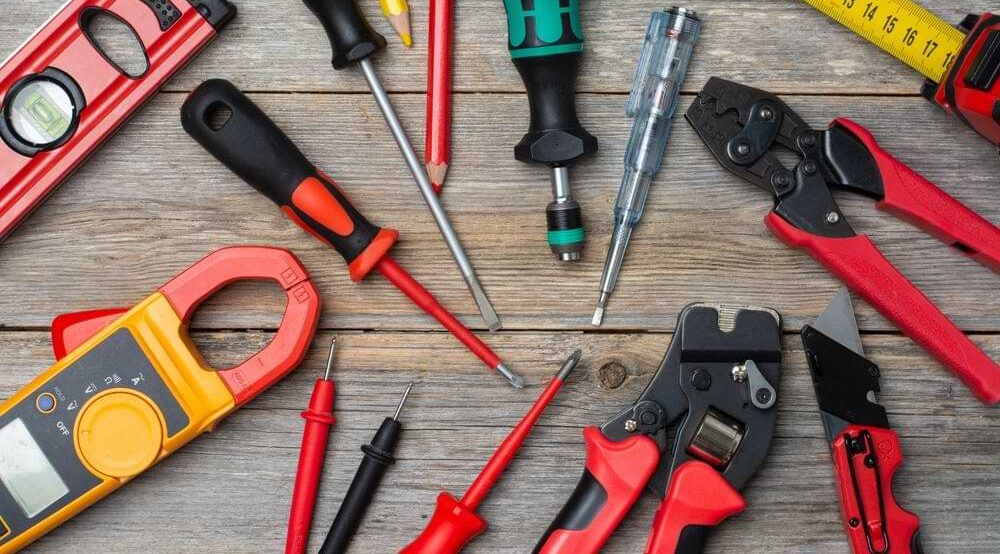published about 6 hours ago
Peel-and-stick wallpaper is marketed as the perfect solution for renters and fickle decorators alike. Slap it on the wall, and if you don’t like it, take it down and start again with a new look. But is it really that easy?
Interior design and DIY experts say there’s a little more to it, and over the years, they’ve learned a thing or two about getting peel-and-stick wallpaper right. Here are the six things that the pros wish you knew about peel-and-stick wallpaper, from application to removal.
Be careful on matte painted surfaces.
The name “peel-and-stick” can give DIYers a false sense of security as they cover their walls in colorful, temporary patterns. Interior designer Sarah Barnard warns that peel-and-stick paper can sometimes actually damage painted surfaces, particularly those with matte and flat finishes. “While non-porous surfaces are more resistant to the adhesive in peel-and-stick papers, keep in mind there’s always the possibility of damage and necessary drywall repair after removal,” she says.
For best results, make sure you don’t apply peel-and-stick to freshly painted surfaces, which are more delicate; instead, give the paint a few weeks to cure, which will help prevent chipping and peeling upon removal of the peel-and-stick.
Temperature can make or break application.
Even if you go in with all the required wall prep — sanding, cleaning, drying — there’s still one aspect of prep that can evade even the most experienced DIYers: temperature. It’s the factor that, unfortunately, you can’t entirely control, but it plays a critical role in the application process. Too-humid, too-hot, and even too-cold air can present issues for application; they’ll all affect the adhesive, which could have trouble gripping the wall you’re applying to.
Additionally, Maegan Bucur, writer and editor-in-chief at Rhythm of the Home, recommends making sure your paper is in sync with your home. “In some cases, the wallpaper itself needs to be the same temperature as the room it is installed in for at least a day,” she says. Avoid storing paper in a car, garage, or other uninsulated space, and instead, let it acclimate to temperature in the room where you plan to install it.
It’s cheaper than traditional paper.
If you’ve ever scrolled the internet for peel-and-stick wallpaper, you know that it’s typically much less expensive than traditional wallpaper. In many cases, that’s partly because the rolls are smaller, but, regardless, there’s still a price difference. Plus, there’s the labor cost savings, since many DIYers can tackle the peel-and-stick process on their own, with limited tools and materials (no paste, rollers, sponges, or smoothers needed).
It’s not as durable as traditional wallpaper, though.
Since peel-and-stick wallpaper is often advertised as a renter-friendly alternative, it hasn’t necessarily been built to last. “Contractors will bring up the fact that peel-and-stick wallpaper is not as durable or long-lasting as PVC or coated vinyl,” Bucur says. However, she adds, “For people who want to change the paper on a regular basis, that can actually be a blessing in disguise.”
If you’re someone who likes to transform the look of your home every year or two, peel-and-stick is the way to go.
With traditional wallpaper, you can often smooth out any wrinkles, creases, or bubbles that come up while the paper is still wet. It’s not quite as easy with the vinyl-like texture of peel-and-stick. Paper may come off the roll wrinkled — particularly if it’s a budget-friendly brand — and there’s little hope of going back. You can choose to ignore it or cut that section off entirely.
As for wrinkles and bubbles that form while you’re applying the paper to the wall, patience is required. Apply a small section of paper at a time and use a crisp edge — like a credit card — to help iron out any bumps before moving on.
There are so many uses beyond walls.
Removable wallpaper can be used for makeovers big and small. It can become a go-to DIY material for projects from drawer liners to furniture glow-ups to bookshelf backdrops. And when you get tired of the look, you can peel the paper off and start fresh.











